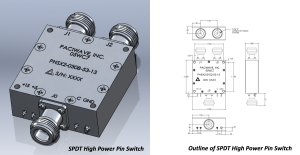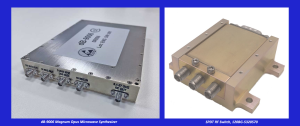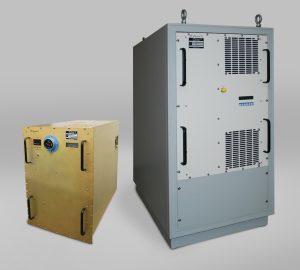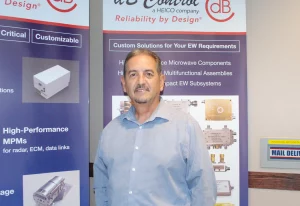By Ollie Holt
This month’s survey examines traveling wave tubes (TWTs) and microwave power modules (MPMs) for electronic warfare applications. TWTs have been the most popular power amplifiers for radar and radar jamming applications for the past few decades. MPMs have slowly begun to replace TWTs in many electronic warfare and radar applications, however, and the evolution of Gallium Nitride (GaN) technology has allowed designers to consider solid state power amplifiers (SSPAs) for radar jamming as well. These technological developments have created a complex market for microwave power amplifiers in the defense industry.
The performance of TWTs and MPMs has improved over the past several years, especially in the areas of cathode chemistry, durability/reliability and power supply integration. By improving Cathode chemistry, TWT designers have increased the electron flow providing better power output. The other TWT amplifier performance parameter that has gotten a lot of attention is durability Health prognostics technologies have crept into the TWT world to help extend the durable life and increase reliability of TWT amplifiers. By monitoring the burn-off rate of the Barium on the TWT’s cathode and by dynamically adjusting the filament voltage to control burn-off rate, TWT life can be extended. This process also predicts TWT life expectancy data to the system so that field test personnel can schedule the TWT for replacement before it fails. Another improvement is the integration of the high voltage power supply into the TWT assembly, making the amplifier more serviceable and increasing its reliability. (Note that TWT amplifiers require high voltage, while SSPAs require low voltage but high current.)
These advances in TWT technology have been overshadowed by the EW community’s rapid adoption of SSPAs. Even though TWT technology has improved over the past decade, this rate of improvement nowhere matches the gains made in SSPA technology during this time period. While TWT amplifiers still hold the advantage in efficiency and maximum power output, they generally do not match the reliability of SSPAs. The defining output power between TWTs and SSPAs is somewhere around 200 Watts. Below 200 Watts it is beneficial to consider an SSPA device, while above 200 Watts, a TWT device should be considered. This line, however, is continually being pushed upward, and output power should not be the only consideration when selecting a power amplifier for a new EW system. Power, size, efficiency, reliability, maintainability and environment/cooling should all be taken into account, as well. The table below shows a simple comparison between TWT amplifiers (TWTAs) and SSPAs.

This month’s survey is focused on TWTs and MPMs. The MPMs are hybrid devices that use an SSPA to drive a TWT. The SSPA devices used are silicon (Si), Gallium Arsenide (GaAs), and Gallium Nitride (GaN), depending on operational frequency. The survey requested information on parameters that impact power amplifier performance. The operational frequency rage, for example, defines the lower to upper frequency range of the power amplifier. Gain defines the increase in power that can be achieved from the input to the output. The output power defines the maximum output power expected and the maximum gain.
The levels (dBc or dB) relative to the carrier are a measure of how high the carrier signal is with respect to the harmonics or spurious signals created within the device. For most applications, the larger this value, the better the performance. Some devices use linearization concepts to achieve better spurious performance while operating the amplifier close to saturation. This technique provides better efficiency and reduces input power usage. The methods to provide linearization include feedback, feedforward, cross-cancellation, and predistortion among others.
Efficiency, in this survey, is defined as the power added efficiency (PAE). PAE is the output power minus the input power divided by the DC power. In high-gain systems, the results are about the same as efficiency, but in low gain systems, the efficiency can be very different. Also note that, in this survey, the input power (DC power) is the average power input. For a pulsed system, PAE is calculated using the input power when the pulse is created, not the average.
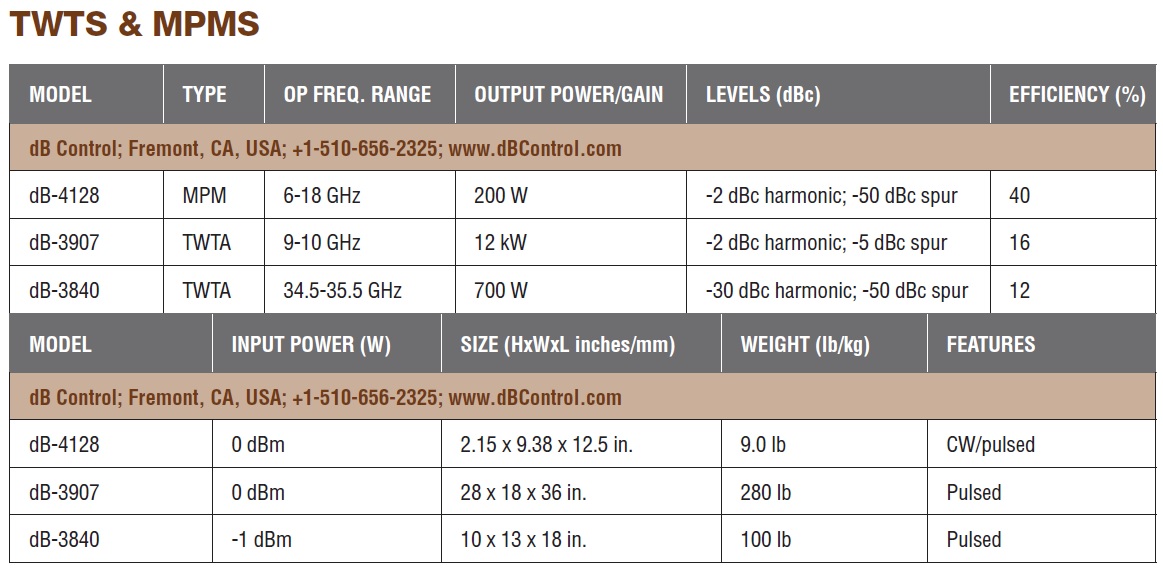
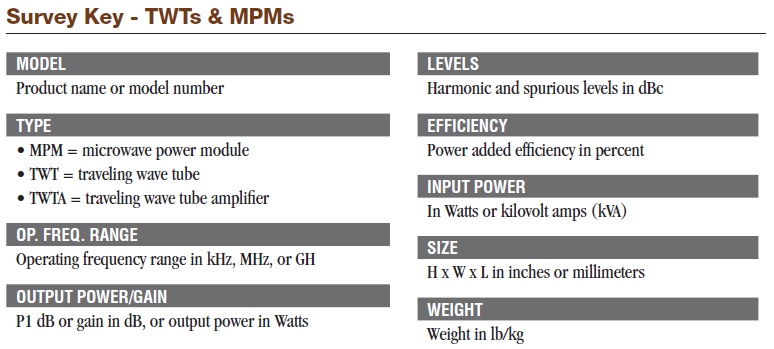
JED’s next survey will be published in the May issue and will cover spectrum analyzers.
This article originally appeared in the Journal of Electronic Defense, March 2016 issue.

